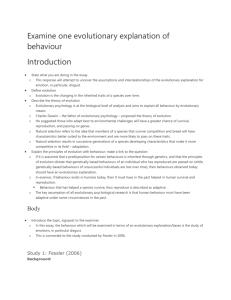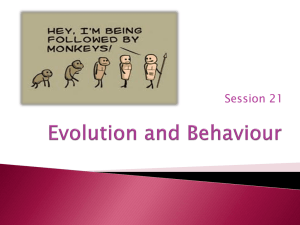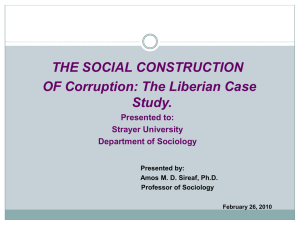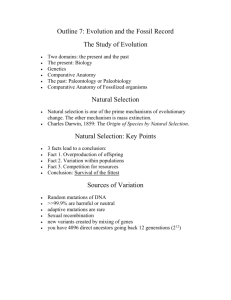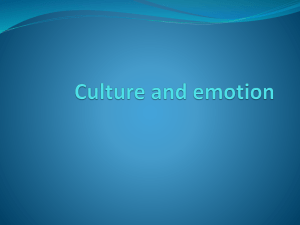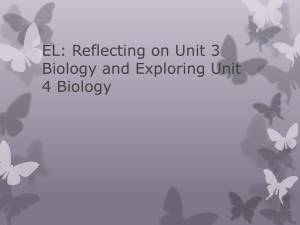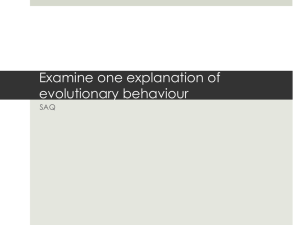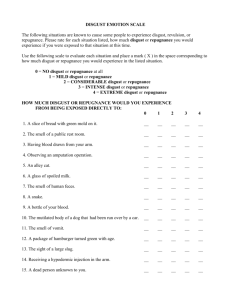Examine one evolutionary explanation of behavior. This paper will
advertisement
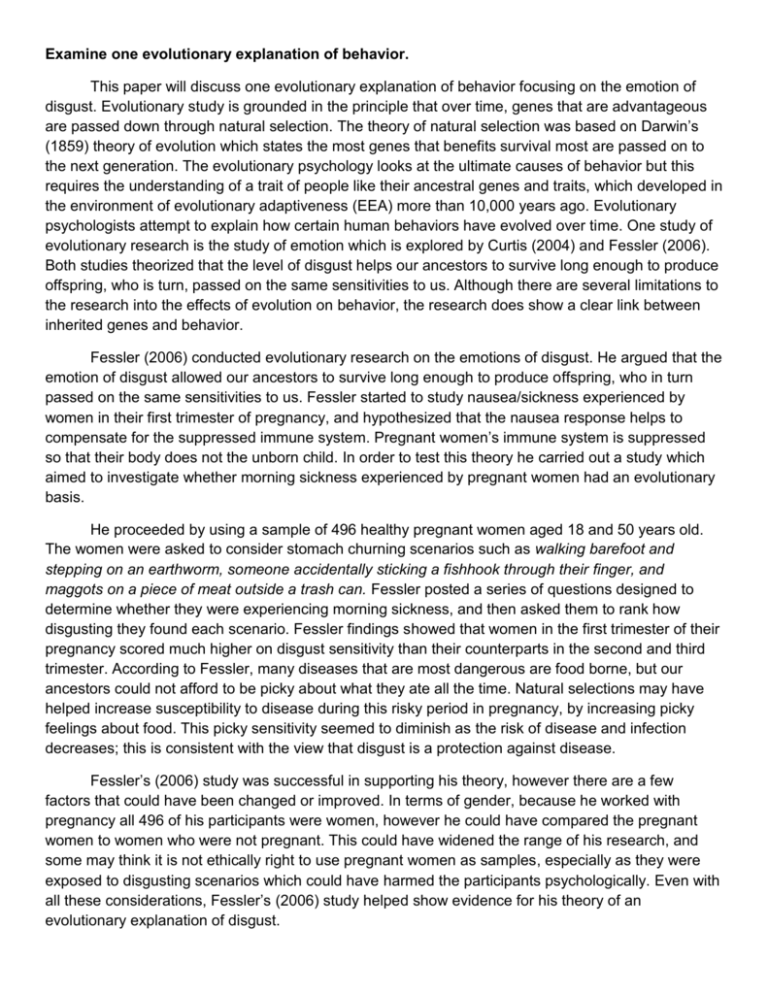
Examine one evolutionary explanation of behavior. This paper will discuss one evolutionary explanation of behavior focusing on the emotion of disgust. Evolutionary study is grounded in the principle that over time, genes that are advantageous are passed down through natural selection. The theory of natural selection was based on Darwin’s (1859) theory of evolution which states the most genes that benefits survival most are passed on to the next generation. The evolutionary psychology looks at the ultimate causes of behavior but this requires the understanding of a trait of people like their ancestral genes and traits, which developed in the environment of evolutionary adaptiveness (EEA) more than 10,000 years ago. Evolutionary psychologists attempt to explain how certain human behaviors have evolved over time. One study of evolutionary research is the study of emotion which is explored by Curtis (2004) and Fessler (2006). Both studies theorized that the level of disgust helps our ancestors to survive long enough to produce offspring, who is turn, passed on the same sensitivities to us. Although there are several limitations to the research into the effects of evolution on behavior, the research does show a clear link between inherited genes and behavior. Fessler (2006) conducted evolutionary research on the emotions of disgust. He argued that the emotion of disgust allowed our ancestors to survive long enough to produce offspring, who in turn passed on the same sensitivities to us. Fessler started to study nausea/sickness experienced by women in their first trimester of pregnancy, and hypothesized that the nausea response helps to compensate for the suppressed immune system. Pregnant women’s immune system is suppressed so that their body does not the unborn child. In order to test this theory he carried out a study which aimed to investigate whether morning sickness experienced by pregnant women had an evolutionary basis. He proceeded by using a sample of 496 healthy pregnant women aged 18 and 50 years old. The women were asked to consider stomach churning scenarios such as walking barefoot and stepping on an earthworm, someone accidentally sticking a fishhook through their finger, and maggots on a piece of meat outside a trash can. Fessler posted a series of questions designed to determine whether they were experiencing morning sickness, and then asked them to rank how disgusting they found each scenario. Fessler findings showed that women in the first trimester of their pregnancy scored much higher on disgust sensitivity than their counterparts in the second and third trimester. According to Fessler, many diseases that are most dangerous are food borne, but our ancestors could not afford to be picky about what they ate all the time. Natural selections may have helped increase susceptibility to disease during this risky period in pregnancy, by increasing picky feelings about food. This picky sensitivity seemed to diminish as the risk of disease and infection decreases; this is consistent with the view that disgust is a protection against disease. Fessler’s (2006) study was successful in supporting his theory, however there are a few factors that could have been changed or improved. In terms of gender, because he worked with pregnancy all 496 of his participants were women, however he could have compared the pregnant women to women who were not pregnant. This could have widened the range of his research, and some may think it is not ethically right to use pregnant women as samples, especially as they were exposed to disgusting scenarios which could have harmed the participants psychologically. Even with all these considerations, Fessler’s (2006) study helped show evidence for his theory of an evolutionary explanation of disgust. Another study carried out on the topic of evolutionary psychology was Curtis et al.’s (2004) study which aimed to use the Internet to investigate if there were patterns in people’s disgust responses. This was done through an online survey with 77,000 participants from 165 different countries: each participant was shown 20 images of which they had to rank their personal level of disgust. The images consisted of 7 pairs of substances where one was potentially harmful to the immune system while the other was visually similar, but not harmful to the immune system. For example, one pair consisted of an image of a plate of bodily fluids and the other image was of a plate of blue viscous liquid. The findings showed that the images which portrayed substances which were potentially harmful to the immune system had the higher disgust responses, and that the disgust reaction decreased with age. This could correlate to the fact that the immune system is weak at a young age. In addition, it was shown that females had higher disgust responses than males, which supports the idea of disgust playing a significant role in successful reproduction. The findings also correlate with Fessler’s (2006) study of evolutionary basis for disgust in pregnant women- their immune system weakens during pregnancy and they become more susceptible to disease, shown by their higher disgust sensitivity in their first trimester. The large sample size of 77,000 participants in addition to the diverse cultures represented serve as positive evaluative points of Curtis’ study. Due to the participants being from 165 separate countries, it can be argued that the results are universal and generalizable. However, a negative evaluative point of the study is that the survey was carried out online- there is no way to confirm the participants’ identities: gender, age and nationality; thus the authenticity of the data cannot be verified. In addition, it cannot be confirmed that the participants fully understood the instructions; for example the younger participants ranging from the ages 6-10 years old may have misunderstood the instructions, thus damaging the results. However, despite these limitations, it does offer evidence to support the evolutionary theory of disgust. While evolutionary psychology is primarily aimed to explain human behavior in ultimate causes, its theories are speculative and are difficult to investigate empirically; therefore researches may succumb to confirmation bias. Evolutionary arguments may also be criticized as being too concerned with past events: the EEA was created more than 10,000 years ago and the world has evolved significantly since then- there is no substantial information of the behavior of early Homo sapiens, so statements about their behavior are hypothetical. Also, evolutionary arguments underestimate the role of culture/nurture/present environmental influences in evolving behavior. However, the theory of ‘genome lag’ is often used by evolutionary psychologists to explain why such behaviors exist in the modern-day world. Evolutionary theories have also been criticized for being genetically determinist and reductionist. . In conclusion, despite the limitations of both studies on evolutionary explanation of disgust t done by Fessler and Curtis, as well as the limitations of evolutionary psychology, the research clearly supports the theory that disgust has evolved and help our ancestor survive and able to pass this genetic trait to us.
